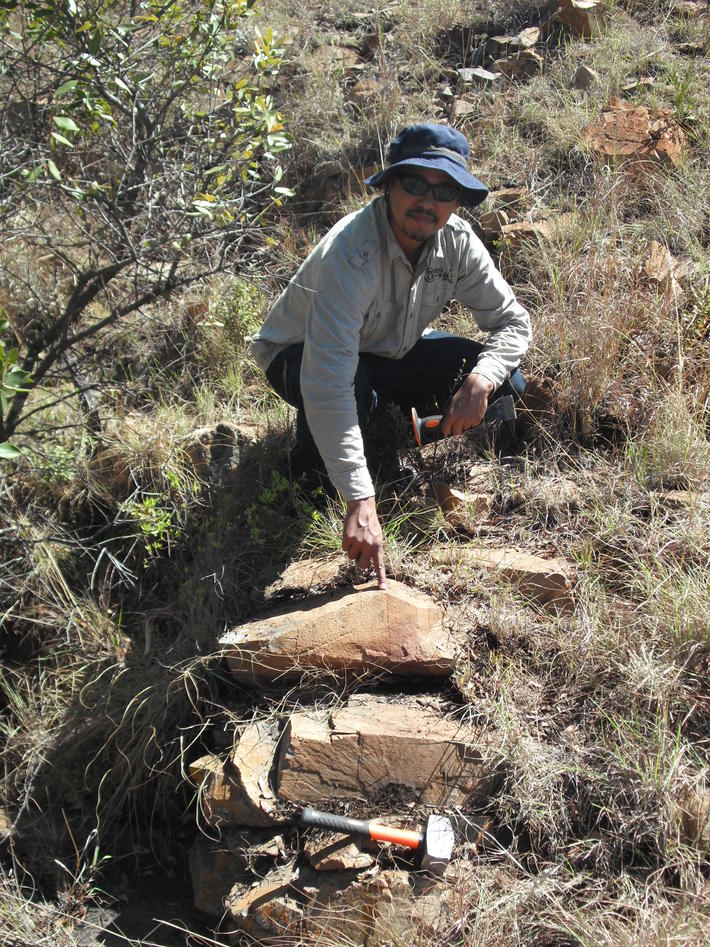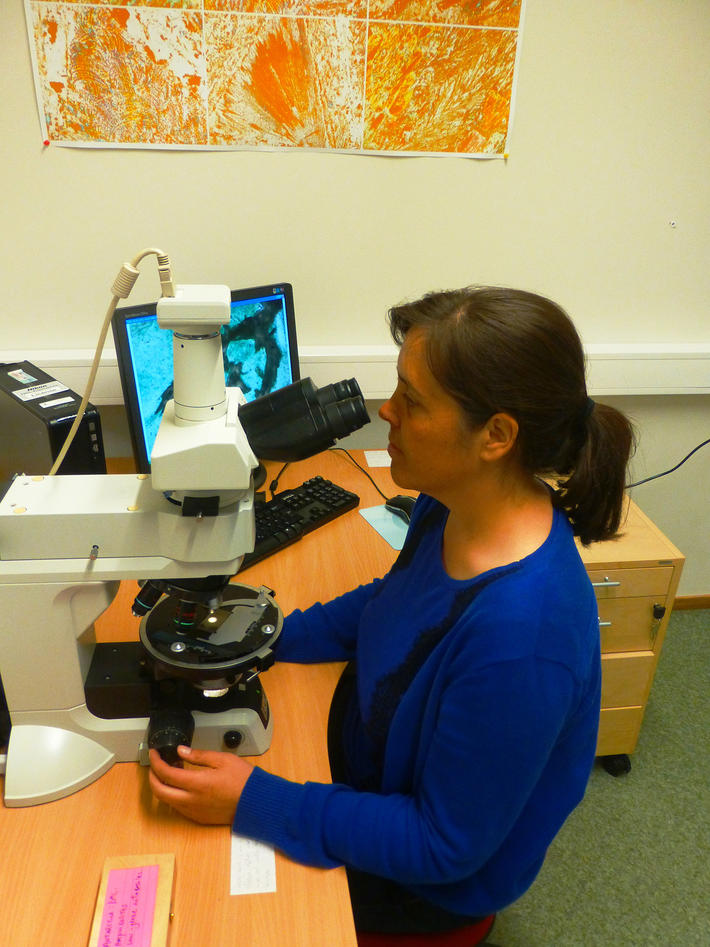Theme Goals and Methods
The Early Earth and Biosignatures group focusses on understanding early Earth evolution and the search for the earliest traces of life in a range of Archean environments. The group is also working on field sites in the Barberton greenstone belt that can be used to understand habitability on the early Earth. Key questions, objectives and methods used by the team concerning the early biosphere and geodynamic processes are outlined below.

Hovedinnhold
Selected questions concerning the early Biosphere:
- When and where did life first evolve on earth?
- What did the earliest life forms look like and how did they make a living?
- How can we reliably detect these earliest life forms?
- Can we reconstruct the physico-chemical conditions that lead to the preservation of the earliest biosignatures?
- How can we use new data to detect possible life in samples from other worlds?
- How can new observations and high-resolution data from early Paleoproterozoic microfossils help in assessing the biogenicity of candidate microfossils in Archean silicified sediments?
- How can we find critical ways on identifying new potential sites for life on the early Earth?
Answers to these questions can be found in the chemical and morphological traces or so called "biosignatures" left in the ancient rock record. Target biosignatures include putative microfossils, stromatolites and microborings. These will be characterized using a range of analytical techniques listed below.
Selected questions concerning early Earth Processes and Environments:
- What was the nature of proto-tectonic processes on the early Earth? When did modern style plate tectonics commence on Earth? What were the implications for early biogeochemical cycles?
- What can the structural geology and shear zones of the Barberton greenstone belts tell us about the how greenstone belts form. Can we further the understanding of the metamorphic history of the Barberton greenstone belt?
- How did the early continental and oceanic lithosphere form and in which type of geodynamic settings? What was the extent of the early landmasses, how did these continents grow?
- What was the nature of Archean oceanic hydrothermal environments? Were these habitable?
- Can we determine the composition and redox-state of the Archean oceans and provide insight into various potential biogeochemical cycles?
- What physiochemical interactions existed between the early geosphere and biosphere?
Answers to these questions can be found by integrating field studies with petrological, geochemical and geochronological techniques to investigate the earliest oceanic and crustal rock sequences preserved in the Kaapvaal Craton of South Africa. This involves, for example, new quantitative electron microprobe mapping techniques and metamorphic petrology, in-situ zircon and titanite geochronology, in-situ determination of trace element and stable isotope compositions of early Archean mineral assemblages.
We employ a range of analytical techniques that include:
- SEM-EDX (scanning electron microscopy and energy dispersive x-ray)
- XRF (x-ray fluoresence)
- XRD (x-ray diffraction)
- Electron microprobe (EMPA)
- Laser-ablation ICP-MS
- FIB-TEM (focussed ion beam transmission electron microscopy at the NTNU nanolab)
- Secondary Ion Mass Spectrometry (SIMS, including NanoSIMS)
- Laser confocal Raman Spectroscopy
- Several techniques for isotope analysis (classical gas-extraction-MS and MC-ICP-MS).

